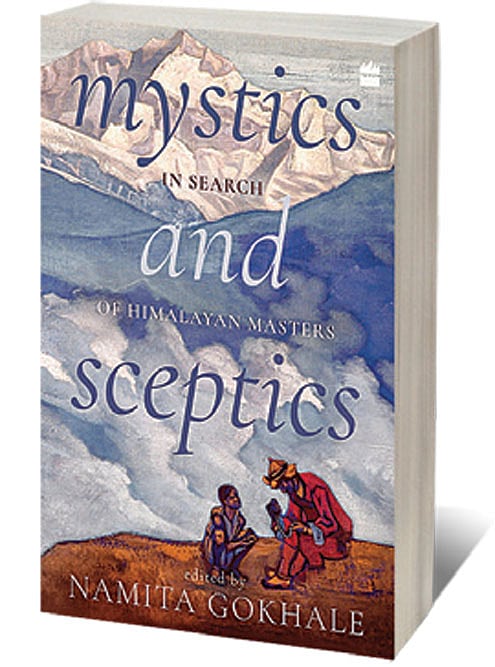Mountains of the Mind

AT THE LAUNCH of Mystics and Sceptics in Jaipur, a middle-aged lady in the audience asked its editor Namita Gokhale how she could learn ‘trance running’. There are two pieces in this anthology— by Tsering Tashi and Rene von Nebesky- Wojkowitz—about reports from Tibet of “mysterious runners who are said to cross the country running for days on end without pause, in a kind of ecstasy”. A stodgy runner myself, I related to her desire for a magic wand, but the realist in me screamed. “Please start running first, Ma’am.”
My notes from that day read, “You don’t learn trance running from going into a trance. You go into a trance by running.” Later, I read Wojkowitz’ piece, ‘Mystic Marathon’. It concluded, “the fabulous performance… is due primarily to perfect bodily control, acquired by years of strenuous exercise, and the development of certain powers that are actually latent in everyone.”
Mark one for the sceptics.
Another member of the audience asked why sceptics and mystics should feature in the same book. Gokhale’s answer, and I wish I could have recorded it accurately, was that mysticism and scepticism must live together. Not just side by side, I reflected, my own being has often been transported by what appear to be mystic events. I have no reason to deny these, nor will I abandon the scepticism which equips me to reject the fakery of exploitative godmen such as Gurmeet Ram Rahim.
Tsering Dondrup’s exquisite novella, ‘The Handsome Monk’, traces a vertiginous path between the rejection of religion and the mysteries of faith and fate. Deeply ironic, it is a mirror that mocks both the believer and the sceptic, or reaffirms either of them. You can be both—at the heart of both belief and scepticism is a life of searching, of asking questions, with or without a master.
2025 In Review
12 Dec 2025 - Vol 04 | Issue 51
Words and scenes in retrospect
An ashram, as Madhu Tandan writes in ‘Letting Go’, is not a place you run away to. Ashish-da, her teacher asserted, “It’s a place you finally come to, to face reality.” For seven years, Tandan and her husband lived in Ashish-da’s Mirtola ashram and learned at his feet. When they left, she felt threatened by the life of the city, by the physical absence of her guru. But, she writes, “The Inner Preceptor stands quietly in the wings… stepping into the light when his presence is most required.”
The book follows many great preceptors into the Himalayas, from Guru Gobind Singh to Swami Vivekananda and Paramahansa Yogananda. And it meets with the Dalai Lama, who took that most consequential journey out of the Himalaya to settle in its foothills, in Dharamshala. “It was meant to be,” I once heard him say in Delhi of his exile, “to bring Tibetan Buddhism back to the land of the Buddha.”
In Rahul Sankrityayan’s ‘Tibet Story’, Sujata Prasad explores the life of “a quintessential sceptic and seeker”. In his restlessness, he travelled to Europe and Manchuria, to Iran and Siberia, and to a Tibet that was closed to outsiders at the time. Imprisoned during the freedom struggle, Sankrityayan began to study Buddhism in jail, then spent time with lamas in Ladakh monasteries. But it was at a Sri Lankan monastery that he believed he found “what I had been searching for in all my wanderings,” the Buddha’s exhortation, “do not believe by deference to some book or tradition or to your elders; always decide upon belief by your own examination.”
Most of us don’t examine enough, we stumble through life at its most obvious. Let this anthology act as a reminder of all that lies within. If the bells and conches of ceremony don’t appeal to you, take heart from the poems of Lal Ded, of which Ranjit Hoskote writes, “They prize clarity of self-knowledge above both the ritualist’s mastery of observance and the ascetic’s professional athleticism.”
To reprise Tandan, “The true ashram is a state of mind, it doesn’t belong to a particular geographical place. It stands for being united by love, for acceptance of suffering… finally, for intelligent enquiry, not for unquestioning belief.”

